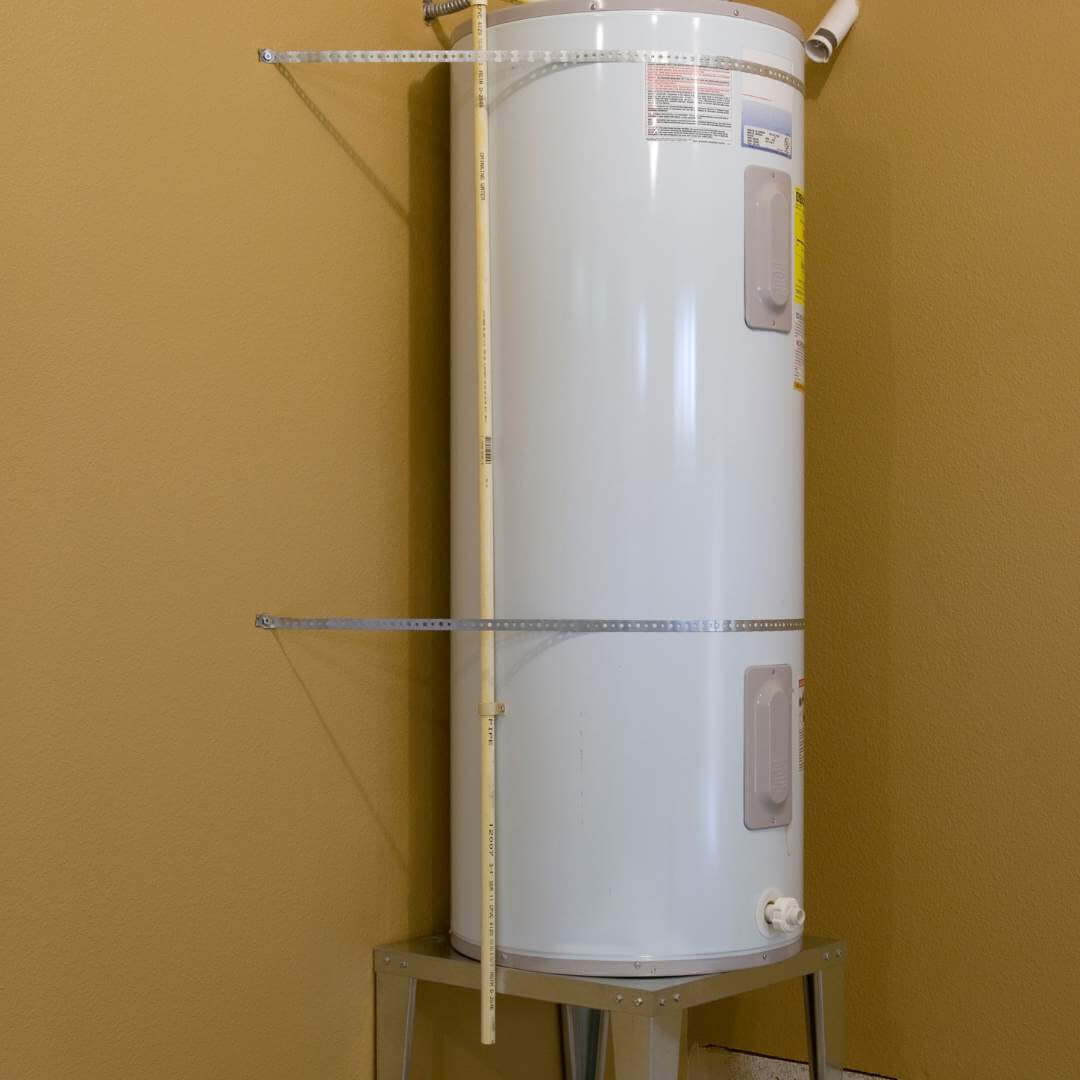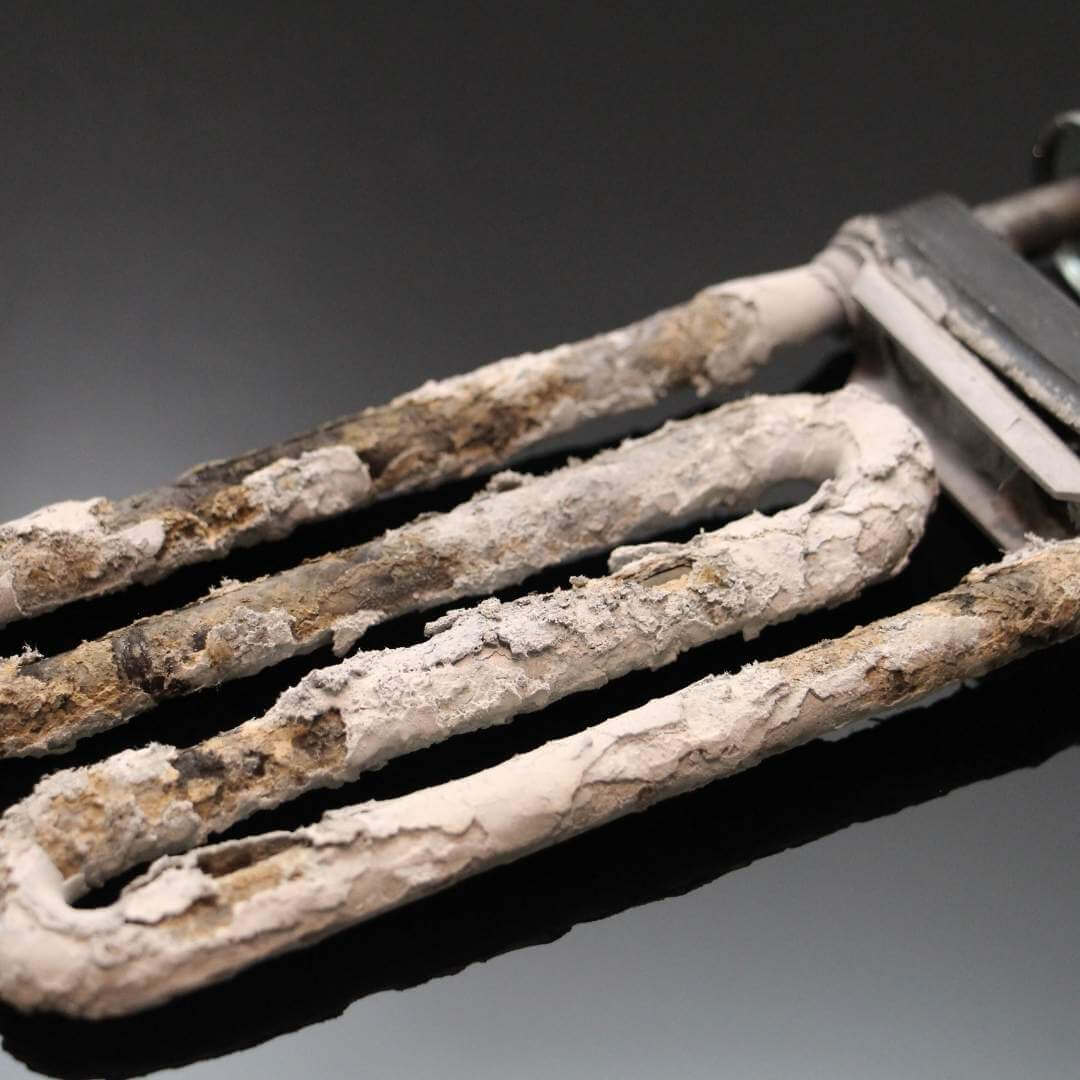The water heater is the home’s most overworked and underappreciated mechanical equipment. Unless it starts making strange noises, we normally presume it is functioning well and leave it alone.
Cold water must first be heated before being used in the shower, clothes washer, dishwasher, and other sinks throughout the house. Of course, we know a normal water heater shouldn’t sound like a jet engine flying overhead.
Most common water heater noises are tolerable and we simply ignore them. However, loud shrieking or rumbling noises are indicators of underlying issues, apart from being distracting [1].
It can be challenging to diagnose and resolve issues with the water heater when they arise, particularly if the noise is inconsistent.
Water Heater Sounds Like a Jet Engine

For instance, sediment buildup in the tank’s base in electric water heaters can cause sizzling, hissing, and cracking sounds. You will frequently hear these noises if the water heater is clogged with dirt or other material. In addition, the heater starts to sound like a jet engine as particles accumulate over time. This can be resolved by flushing and draining the water heater once a year.
Water heaters do not operate quietly. Water heaters sound similar to a desktop CPU’s humming. However, you might not hear the sound if you’re not paying attention as you walk past it. Because of moisture on the burner, you can hear popping noises from gas-powered water heaters.
On average, water heaters should have sound level less than 65 decibels. However, many heater manufacturers claim that their products have a 49db noise rating. [1]
Reasons for the jet engine sound

- Sediment build-up
Excess sediment buildup will cause your water heater to make loud, rumbling noises. Mineral sediments in the water supply will eventually build up and interact with water heater heating elements.
The water heater’s burner will overheat and leak if there is debris in the storage tank. When the water is heated, a coffee maker-like sound is produced. This noise is produced by the water bubbling as it flows through the sediment layer.
On the other side, the debris could lead to an overheated tank. Over time, this erodes the water heater tank’s strength. The leak from the tank could cause damage to your home.
In addition, there is the possibility that the heater tank might explode. A damaged tank could leak or explode, costing your property thousands of dollars in water damage. The problem of sediments is common in areas where there is hard water.
- Inconsistent water pressure
When there is a problem with the water pressure, your water heater makes a high-pitched screeching sound. A water explosion or fire hazard can be caused by excessive water pressure.
Water heaters typically have safety features such as pressure relief safety valves for controlling water pressure. When there is an increase in pressure inside the appliance, the valve opens and lets water out.
The pressure release valve is located on the upper side of the heater. A leaky valve signals a problem with the pressure or temperature in the tank.
Additionally, a worn-out or infrequently replaced valve may not be able to survive the pressure or heat of the tank. This might lead to failure.
You won’t hear the pressure relief valve activating sound in a typical water heater. However, the pressure valve will screech if it is broken and not fully opened.
- Leakage
A leaking water heater necessitates prompt attention, and sizzling sounds might alert a homeowner to the problem. This noise from the water heater is caused by liquid water dropping from a valve or another connection and vaporizing after coming into contact with the warm exterior.
Some condensation inside and around a water heater is typical. However, considerable water leakage from the water heater require professional assistance. A leaking water heater may need new pipes, a new tank, or the replacement of the entire heater system.
- Thermostat problem
Electric water heaters have at least one thermostat-connected heating element powered by electricity. Water flowing around a component is heated by electricity if it drops below a predetermined temperature.
An electric water heater that hums could have a loose heating element from wear and tear or improper installation. The flexible component produces the hum, which vibrates almost like a tuning fork due to the water cycling around it.
Tightening the heating element can eliminate this water heater noise. [2]
Possible solutions and maintenance
- Flushing the water heater
The jet engine noise can be done away with by flushing the heater. The best way to avoid sediment accumulation is to thoroughly and frequently flush out the water heater [3].
The flushing process involves the following step:
- Turn off the water heater: This procedure is different for water heaters fueled by gas or electricity. First, remove the water heater’s plug from the power source to switch off the electric systems. Reduce the temperature settings on gas-powered heaters to vacation or pilot. By doing this, the heater won’t turn on while flushing. Additionally, it stops it from melting a tank’s interior.
- Shut the cold water valve to stop the tank from refilling during flushing.
- Connect a garden hose to the drain stopper: Use a garden hose of the same width as the stopper. Place the garden hose outside your home, preferably close to the street surface, and gently screw one end into the drain stopper.
- Let air into the device: There are two ways to let air into the appliance. First, open the hot water side of your kitchen or bathroom faucet. The water will be able to drain down the hose because air will pass through the spout and into the tank. The pressure release valve can also be opened as an alternative. Air can enter the tank thanks to the valve.
- Use a screwdriver to unlock the valve on the drain stopper: Open the drain stopper with a knife or a screwdriver. Stand back to let hot water emerge from the heater.
- Watch how the hot water flows: Take precautions when handling hot water from the water hose. Keep young children and animals away from the water’s flow.
- Pour cold water into the tank in brief pulses: For 20 to 30 seconds, let the cold water intake be open. The sediments will become sufficiently stirred by the quick blast of cold water to leak out of the tank. Spend at least four times doing this.
- Add more cold water to the tank and repeat the flushing procedure.
- Continue cleaning the tank until no more sediments are visible.
- To prevent water spills, open your tank and close the pressure relief valve: Plug in your electric water heater at this point. Move the temperature setting of a gas heater from pilot or vacation to the appropriate level. Now that the rumbling noises have stopped, your water heater should work properly.
A thorough inspection of heater elements
Ensure the water heater is turned off so you can check that all components are secure. Make sure the water heater has been off for a few hours before you begin tightening screws, bolts, and other parts.
Otherwise, the water inside can be scalding, and you might get burned if any leaks occur [4].
Make sure the valve is open by checking it! Turn the valve until it is fully open.
Adjust the Temperature
Unscrew the cover for the temperature dial by locating it on the tank’s side. Then, use a flathead screwdriver to rotate the dial to 120 degrees.
You might save up to 5% on energy bills for every 10 degrees you lower the thermostat. If you intend to travel more than three days away from home, turn off the water heater or lower the thermostat.
Monitor the pressure relief valve
Test the pressure-relief valve located on the water heater’s top or side. When the pressure inside the tank rises, this valve opens automatically. Place a bucket beneath the water heater tank’s discharge line and gently lift the pressure-relief valve’s lever to test it.
Replace the valve if it doesn’t release water when you lift the lever. It’s simple to replace. Drain the tank, unscrew the discharge pipe, turn off the water, and unscrew the old valve.
The new valve’s threads should be taped with sealant before being screwed in. Your valve might leak if it has been used for a while without being tested. If so, swap out the valve .
Follow these simple steps to replace the pressure relief valve:
- First, grab a screwdriver, garden hose, wire brush, Teflon tape, adjustable wrench, and other tools. Make sure the hardware store has an appropriate substitute as well. Next, purchase a pressure valve with identical BTU, PSI, and thread sizes.
- Remove the electric water heater’s plug from the wall socket. Turn off the gas valve if using a gas heater. Additionally, switch the water heater to the vacation or pilot modes. Finally, be sure to shut off the cold water valve.
- Drain the tanker’s hot water. First, connect the drain stopper to a garden hose. Then, to let air into the tank and lower pressure, open your bathroom or kitchen faucet’s hot water side.
- For a short period, open the drain valve using a screwdriver. This enables the water level to drop below the pressure valve setting.
- Is the water level lower than where the valve is set? If so, take out the pressure valve. Next, remove the drain pipe from the valve by unscrewing it. The defective valve should then be removed using an adjustable wrench.
- Wrap Teflon tape around the replacement valve’s thread. Then, screw it into the water heater using an adjustable wrench.
- Open the cold water valve and reattach the drain pipe to the valve. The gas valve should then be opened and set to the desired temperature.
Read Also: AO Smith vs Rheem Water Heaters
Conclusion
You now understand why your water heater makes a jet engine-like noise. So get your tools ready and start working to fix it. If you’re unsure you can handle these repairs or are unprepared, don’t hesitate to call your plumber.
Contact a reputable plumber if your water heater emits any of these odd noises. Knowing the typical noises a water heater makes is a good place to start. A professional can determine the best action to take if anything changes or new conditions arise.
Related: There Is No Water In Bathroom But Everywhere Else Flows

Michael Davis is a heating & plumbing expert who currently works as independent contractor in SC. He also writes for Plumbertip.
For almost 10 years he worked on various plumbing tasks across South Carolina.


